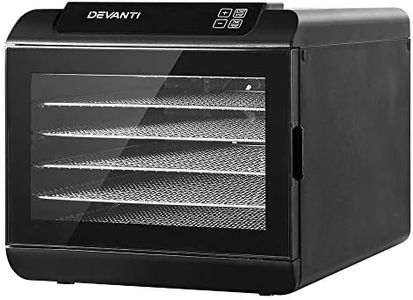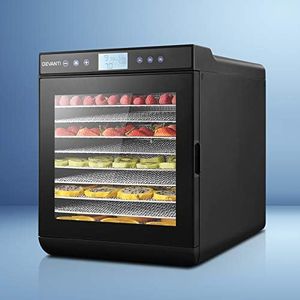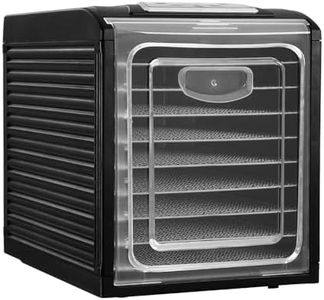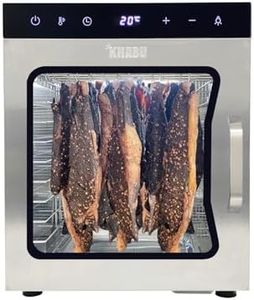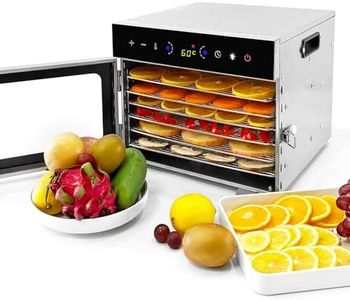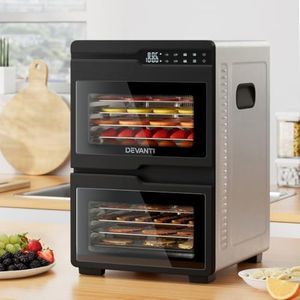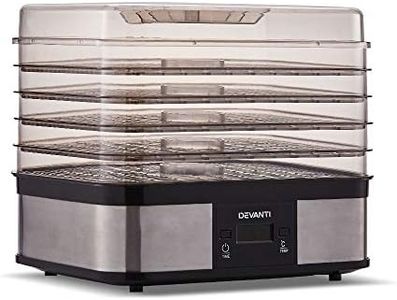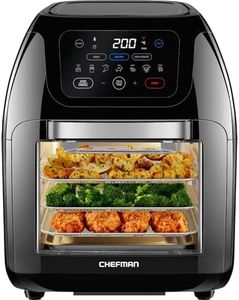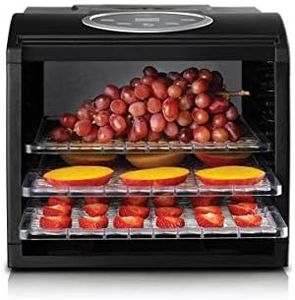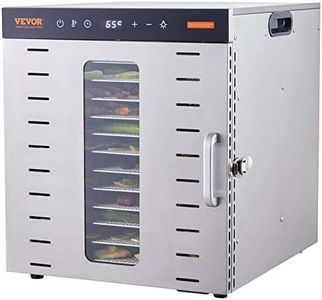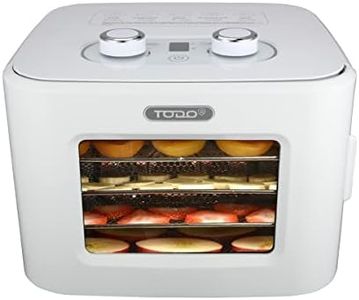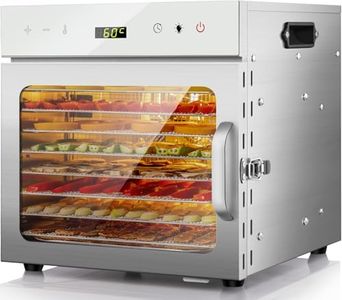We Use CookiesWe use cookies to enhance the security, performance,
functionality and for analytical and promotional activities. By continuing to browse this site you
are agreeing to our privacy policy
10 Best Dehydrator Machine
From leading brands and best sellers available on the web.Buying Guide for the Best Dehydrator Machine
When choosing a dehydrator machine, it’s important to find a model that fits your needs, space, and the type of foods you plan to dry. Dehydrators are great for preserving fruits, vegetables, herbs, and even making snacks like jerky. There are several key specifications to consider, and understanding them will help you pick a dehydrator that’s easy to use and effective for your intended purposes.CapacityCapacity refers to how much food you can dry at once, usually measured by the number or size of trays. Smaller capacities (4-5 trays) are great for occasional use or when drying small batches like herbs or snacks for one or two people. Medium to large capacities (6+ trays or expandable models) are better for families or anyone wanting to process a large harvest at once. Think about how much you plan to dehydrate at a time—if you often have lots of produce or like to make bulk snacks, a higher capacity model will save you time.
Temperature RangeThe temperature range shows what low and high heat settings the machine can use. Lower temperatures (around 95°F/35°C) are gentle for herbs and delicate foods, while higher temperatures (up to around 165°F/74°C) are needed for jerky and meats. A wide temperature range gives you more flexibility. If you want to dry a variety of foods—from herbs to meats—look for a model that covers both ends. If you only plan to make dried fruit or a single type of snack, a narrower range can suffice.
Airflow & Heating StyleDehydrators use either vertical or horizontal airflow to circulate heat. Vertical systems (usually with a fan at the top or bottom) might need rotating trays for even drying, while horizontal airflow (fan at the back or side) tends to dry more evenly across all trays. Even drying means you won’t have to shuffle trays as often. If convenience and consistent results matter to you, horizontal airflow may be a better fit, especially for mixed loads or thick foods. For simple, single-layer drying, vertical units work well.
TimerA timer lets you set the dehydrator to run for a certain period and then automatically shut off. This is handy for overnight batches or when you’re not home, so you don’t over-dry your foods. If you have a busy schedule or like to dry foods overnight, a built-in timer makes the process nearly hands-off. Manual models work fine if you’d rather keep a close watch and stop drying whenever you choose.
Noise LevelDehydrators use fans to circulate air, and some can be noisy. Noise level isn't always listed, but larger or powerful machines generally make more sound. If you plan to run your dehydrator in your kitchen or an open area, consider if a quieter model would be more pleasant, especially if you’re sensitive to noise or use it frequently.
Ease of CleaningCleaning involves washing the trays and any other parts that come in contact with food. Some machines have dishwasher-safe parts, while others just need a rinse. If you’ll use your dehydrator often or dry sticky foods, easier cleaning will save you time and headaches. Look for smooth tray surfaces and removable parts.

